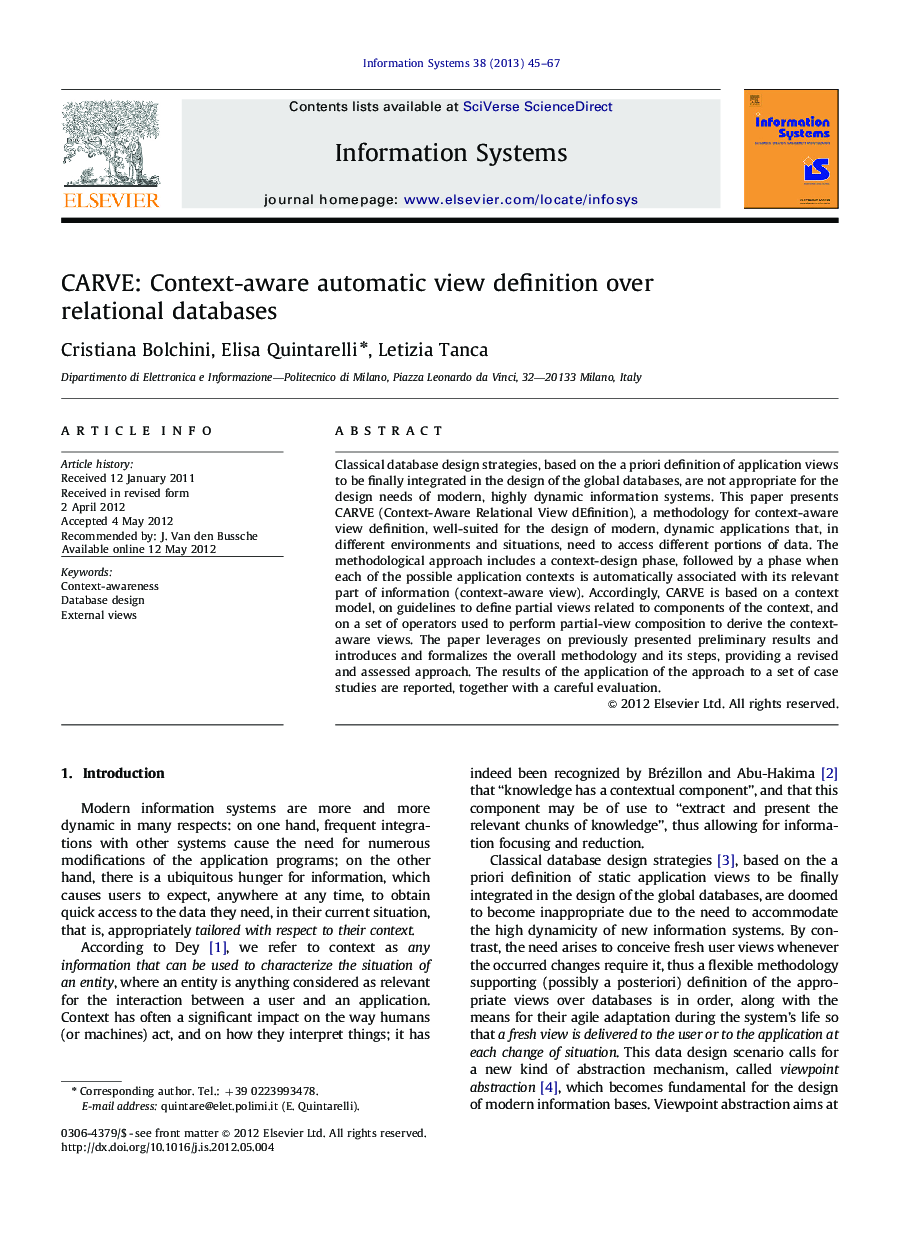| Article ID | Journal | Published Year | Pages | File Type |
|---|---|---|---|---|
| 396539 | Information Systems | 2013 | 23 Pages |
Classical database design strategies, based on the a priori definition of application views to be finally integrated in the design of the global databases, are not appropriate for the design needs of modern, highly dynamic information systems. This paper presents CARVE (Context-Aware Relational View dEfinition), a methodology for context-aware view definition, well-suited for the design of modern, dynamic applications that, in different environments and situations, need to access different portions of data. The methodological approach includes a context-design phase, followed by a phase when each of the possible application contexts is automatically associated with its relevant part of information (context-aware view). Accordingly, CARVE is based on a context model, on guidelines to define partial views related to components of the context, and on a set of operators used to perform partial-view composition to derive the context-aware views. The paper leverages on previously presented preliminary results and introduces and formalizes the overall methodology and its steps, providing a revised and assessed approach. The results of the application of the approach to a set of case studies are reported, together with a careful evaluation.
► CARVE is a methodology to tailor context-aware application views over a database. ► Each context-aware view focusses on information which is interesting in a specific situation (context). ► A context model (CDT) is used to express the aspects necessary to specify the application user's possible contexts. ► Three operators working on sets of relations are used to automatically generate context-aware views. ► Interesting properties for the operators are discussed and proved.
